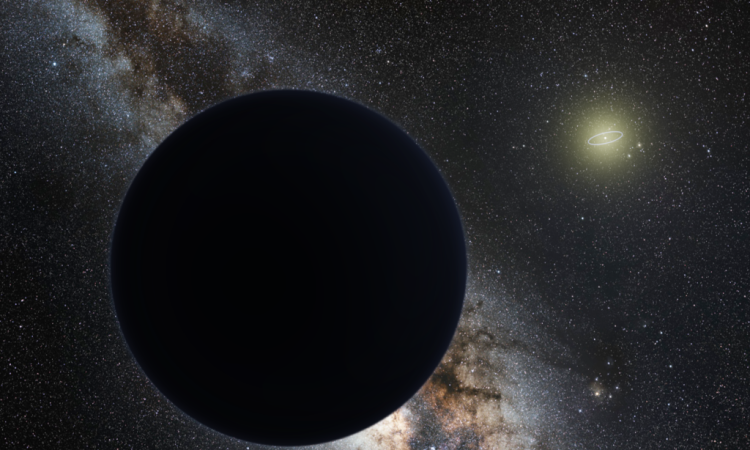
In the outer Solar System, far from the light and heat of the Sun, things can get a little… weird. There, groups of rocks orbit in loops that some astronomers have attributed to the presence of a large, unseen planet lurking at the edge of the Solar System.
So far, searches for the hypothetical Planet 9 have yielded no results. There are many possible reasons for this, a strong one of which is that it never existed. But if this is the case, how do we explain the orbits? Well, a new paper has a potential solution: an unknown star.
Once upon a time, billions of years ago, a massive object might have passed close enough to gravitationally scramble the orbits of objects in the outer Solar System, causing the strange orbits. Some of these outer objects may have even come much closer to the Sun, now being seen as strange satellites captured by the giant planets.
That’s the conclusion reached by a team of astrophysicists led by Susanne Pfalzner of Forschungszentrum Jülich in Germany, who ran computer simulations to observe the effects that stars of different masses and distances have on the outer Solar System as they pass next to them, write .
The outer Solar System is different
“The best match for today’s outer Solar System that we found with our simulations is a star that was slightly lighter than our Sun – about 0.8 solar masses,” explains astrophysicist Amith Govind from Forschungszentrum Jülich.
“This star flew past our Sun at a distance of about 16.5 billion kilometers. That’s about 110 times the distance from Earth to the Sun, and a little less than four times the distance to Neptune.”
Most things inside the Solar System orbit in a more or less flat disk configuration. It is a relic of how the Solar System formed; when the Sun was a small spinning star about 4.6 billion years ago, material from the cloud around it swirled around it and fueled its growth. Over time, this swirling material flattened into a disk.
What the Sun did not devour then turned into the Solar System, asteroids and satellites. And because the solar system didn’t undergo any major disruption, more or less all those planets, asteroids and satellites remained in that disk.
Searches for Planet 9 failed to find such a world
But the outer Solar System is different. There are clusters of rocks orbiting the Sun beyond Neptune’s orbit – the Trans-Neptunian Objects, or TNOs – at remarkable inclination angles. Some of these angles are so steep that the object almost orbits the poles of the Sun, instead of its equator.
According to some scientists, these orbits are compatible with the gravitational influence of a planet with a mass up to five times that of Earth. But space is far from empty, and although there are no stars very close to the Sun today, there probably once were more. Stars are usually born in clouds where many other stars are born and begin life in fairly crowded environments.
Pfalzner and his colleagues ran more than 3,000 simulations, varying the different stars and how close they pass to the solar system, observing the results and comparing them to the known eccentric orbits of the TNO clusters. They found that a star slightly smaller than the Sun, passing by the outer solar system, could have produced today’s madness.
The flyby could even have produced the strange orbits of objects such as 2008 KV42 and 2011 KT19, which orbit in the opposite direction to the planets with near-perpendicular inclinations. And these objects have previously been invoked in studies looking for them
According to the team’s simulations, up to 7.2% of the original TNO population could have been ejected inward toward the Sun.

